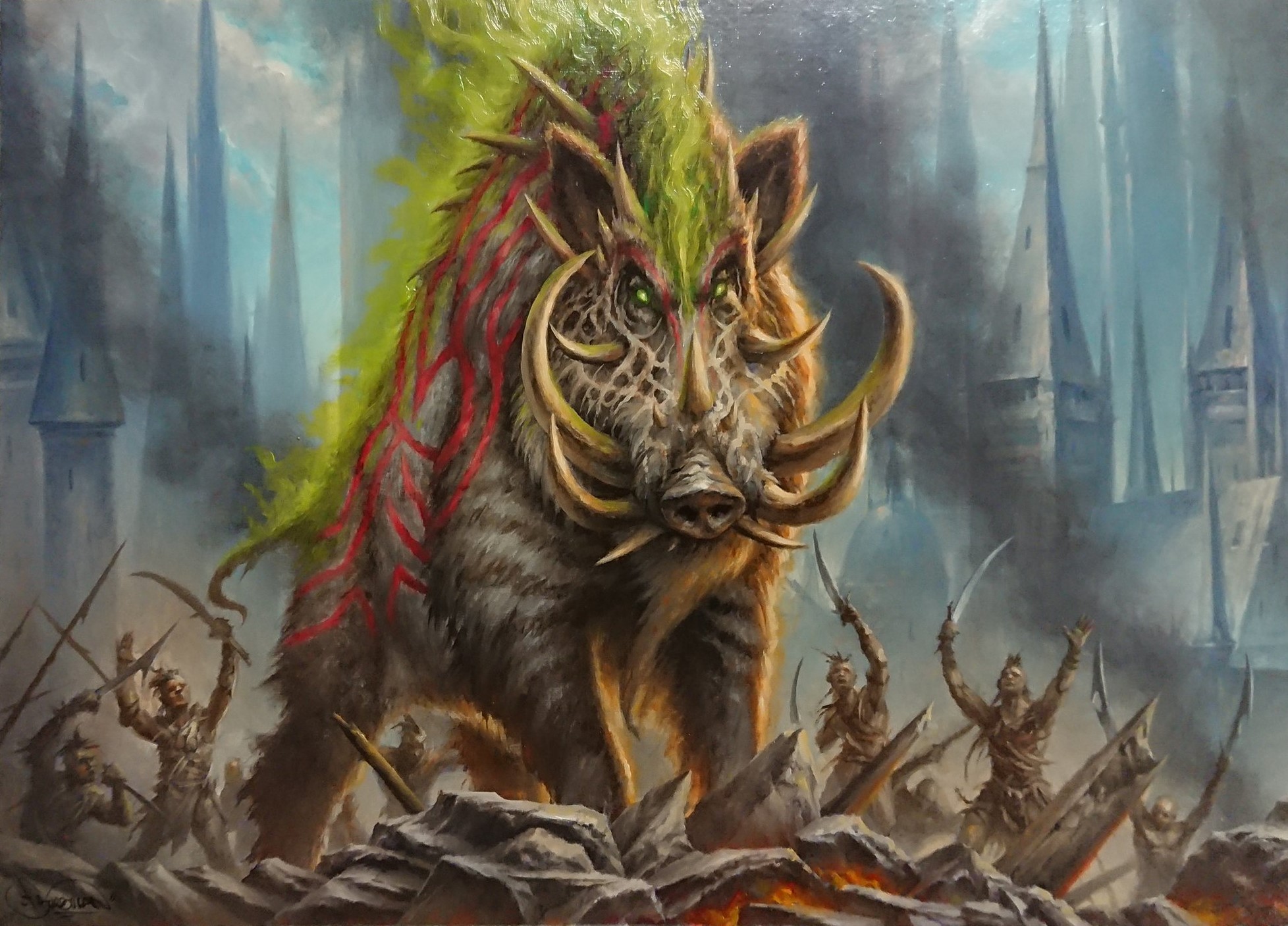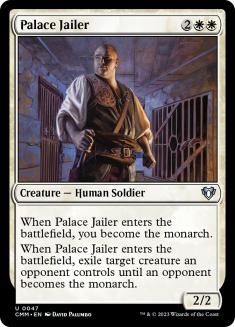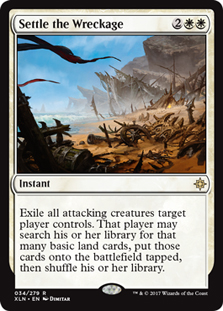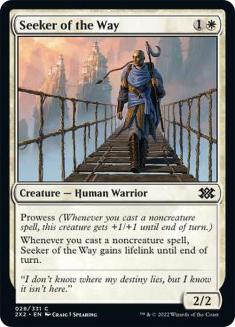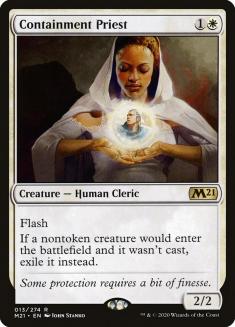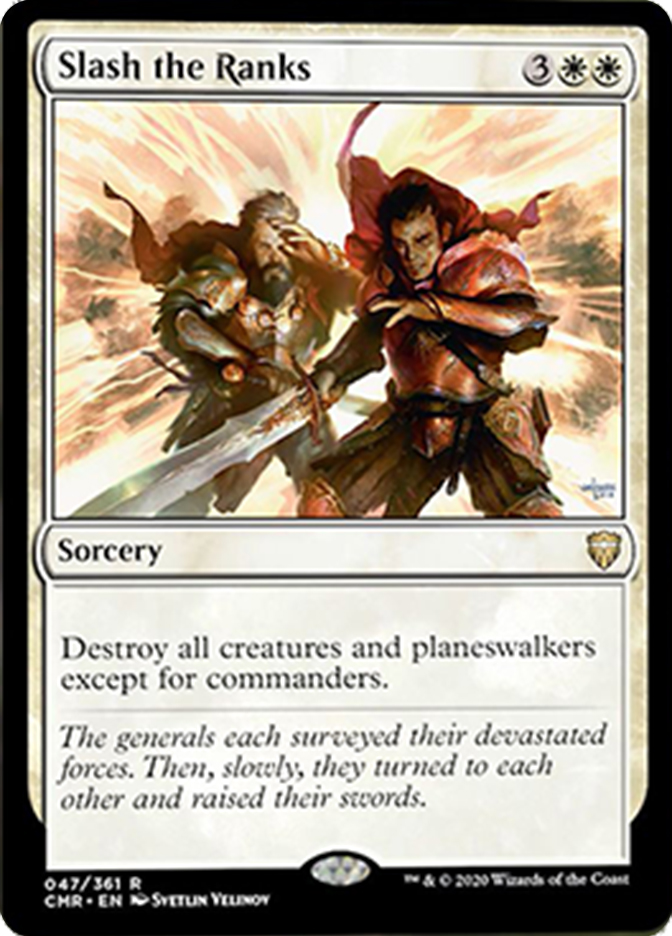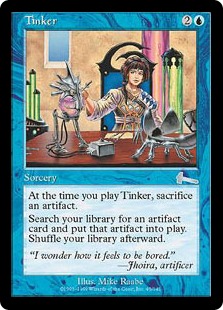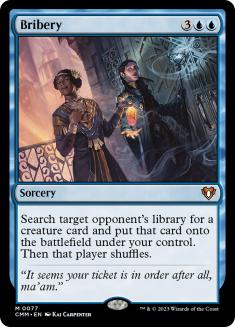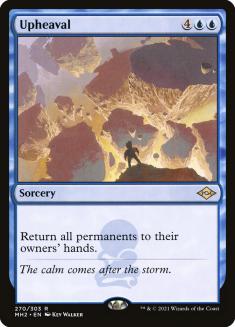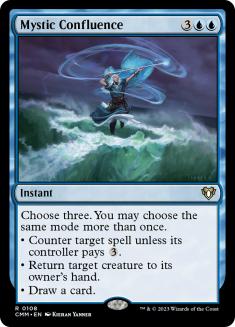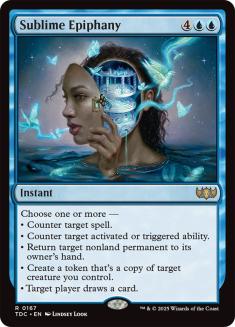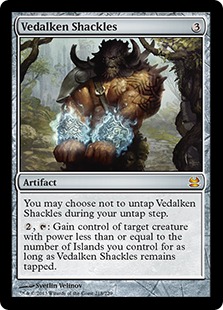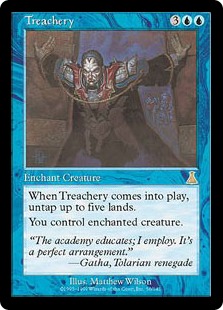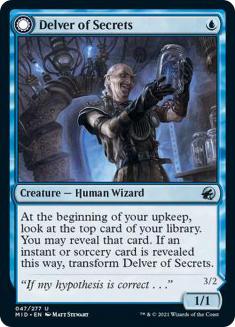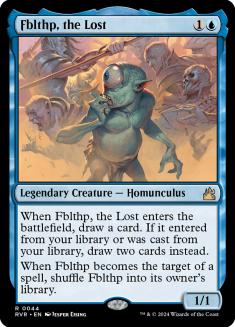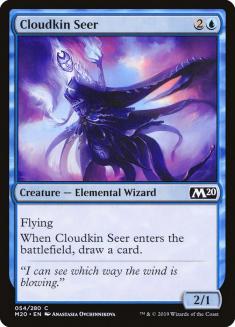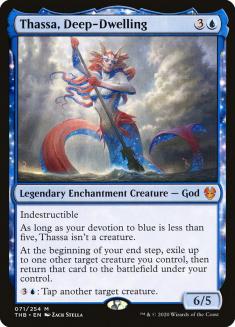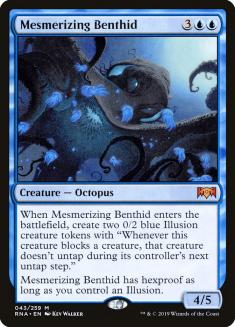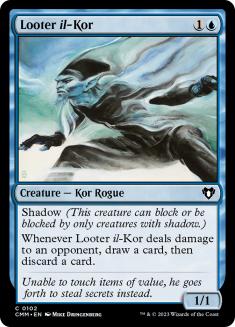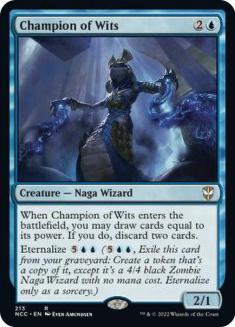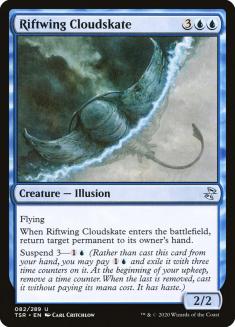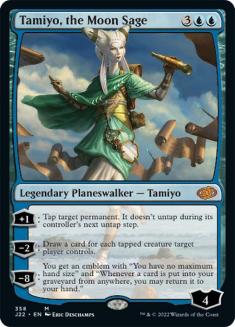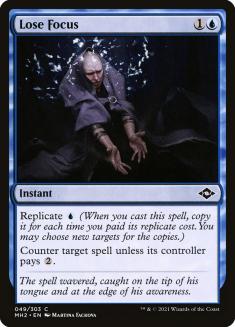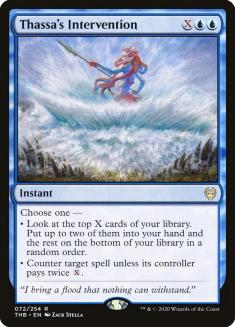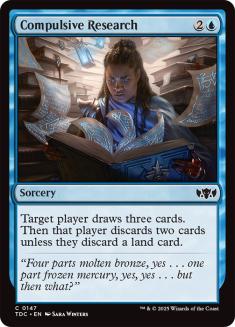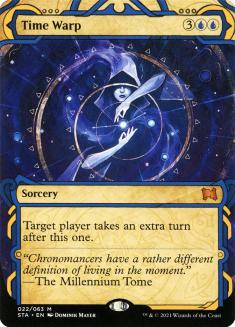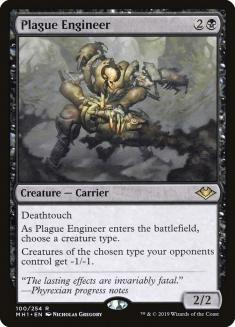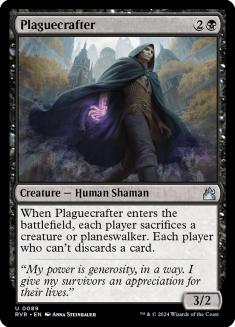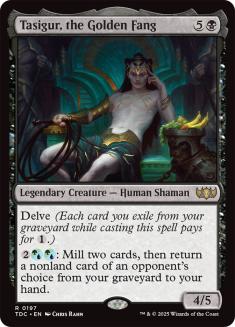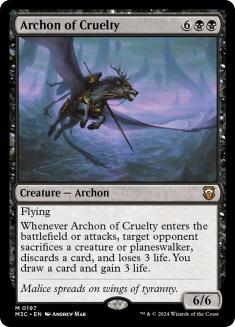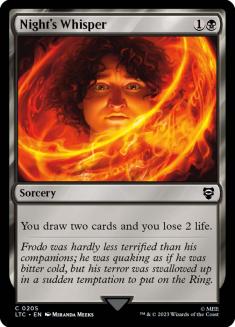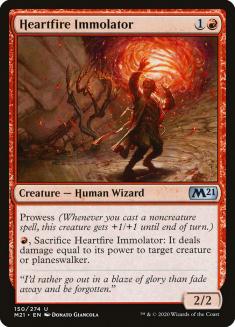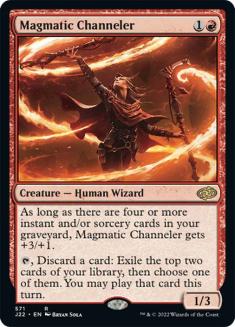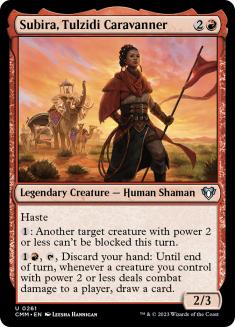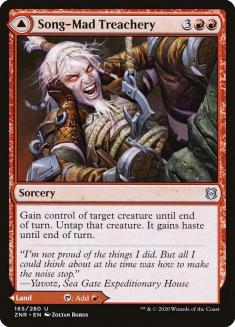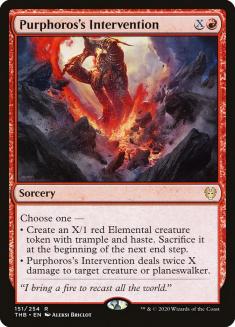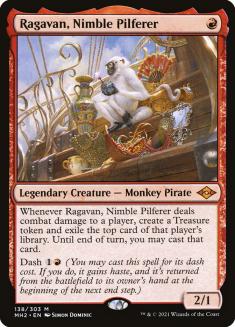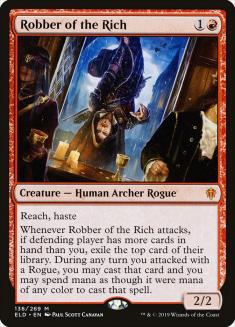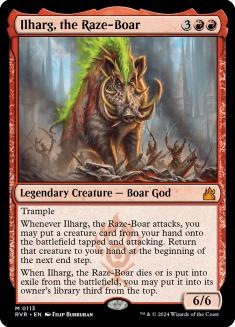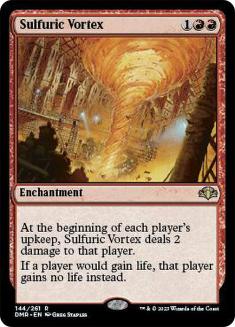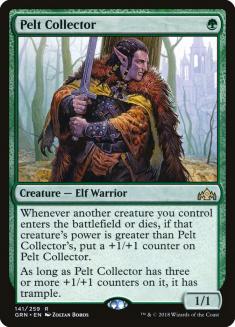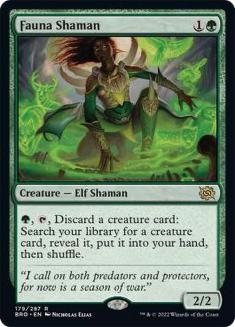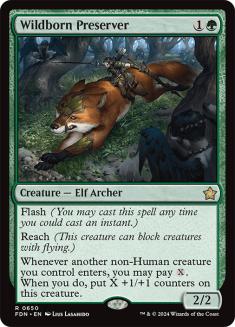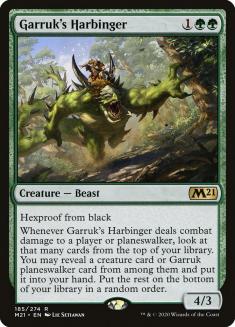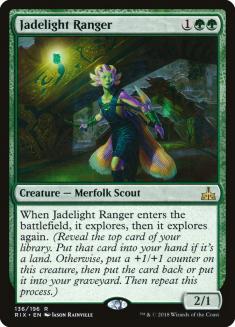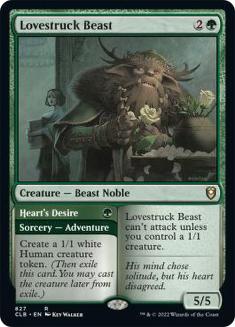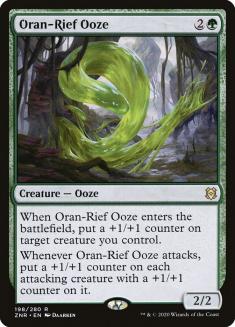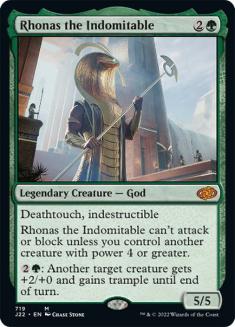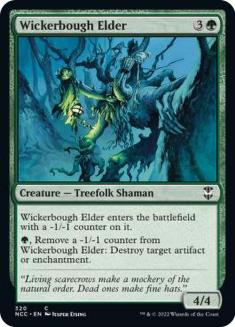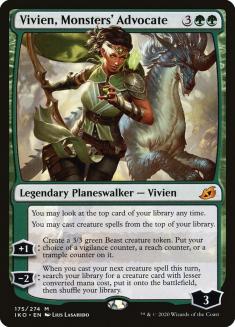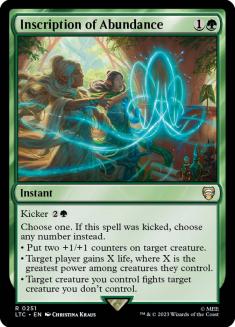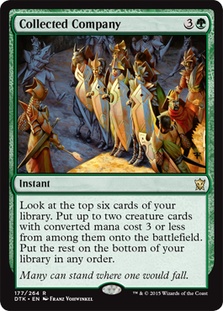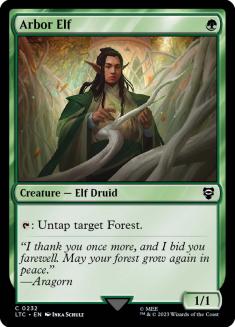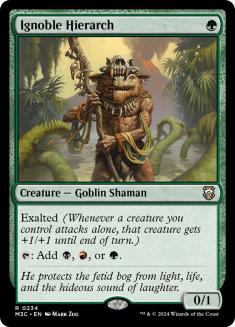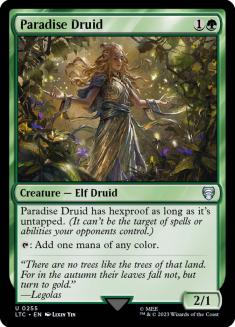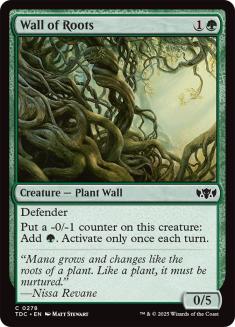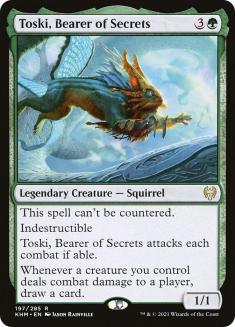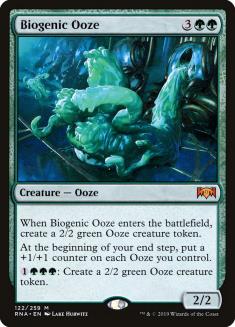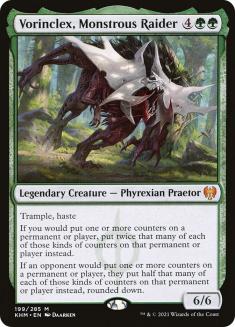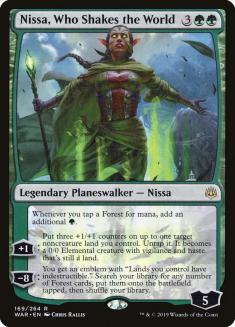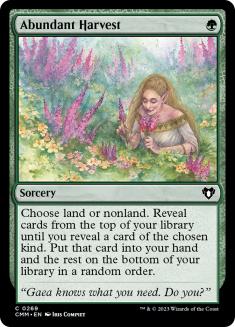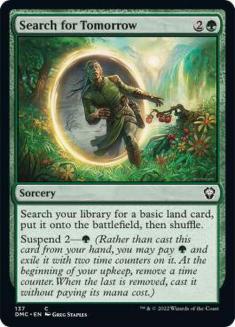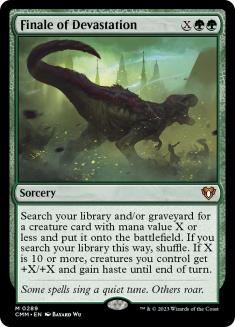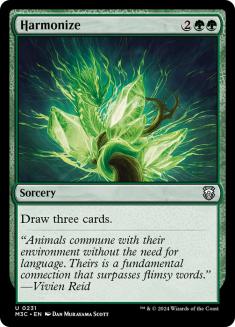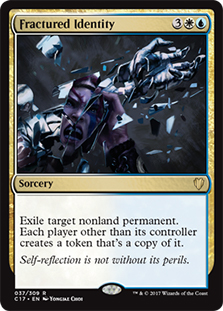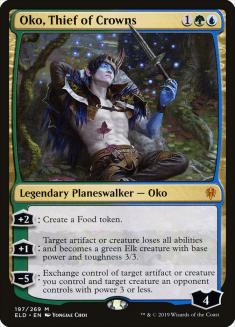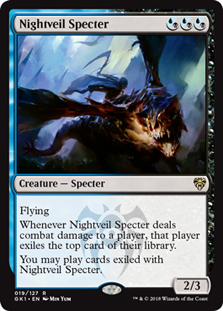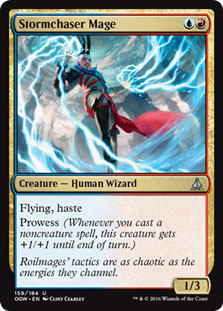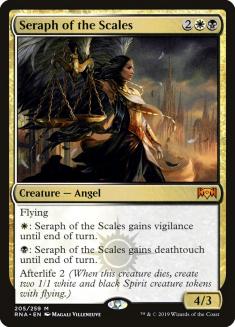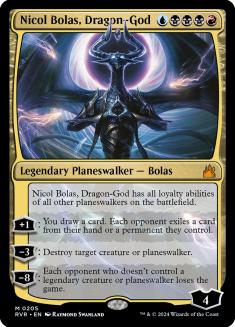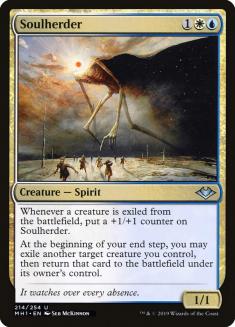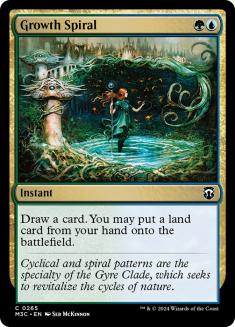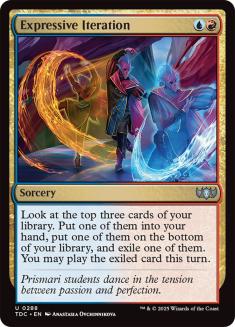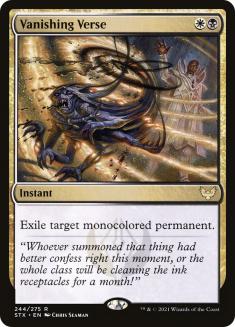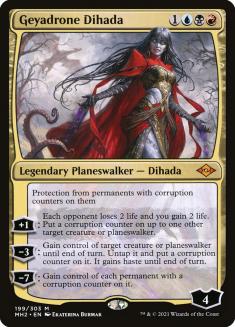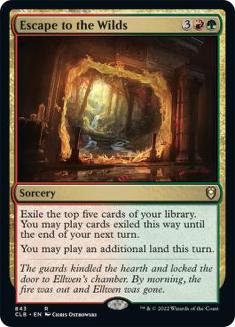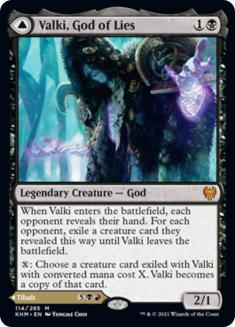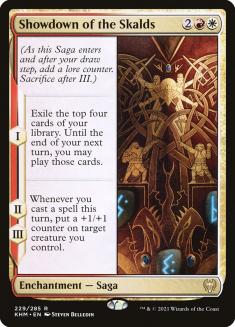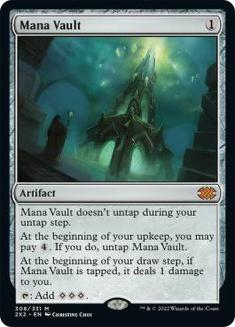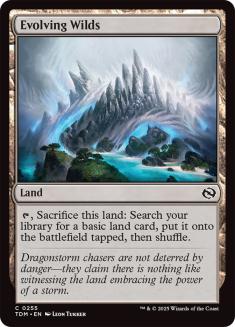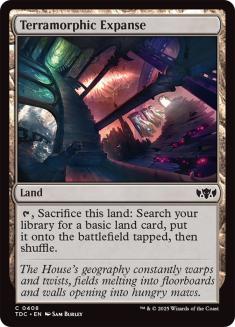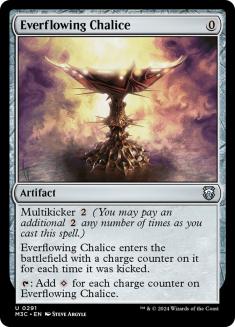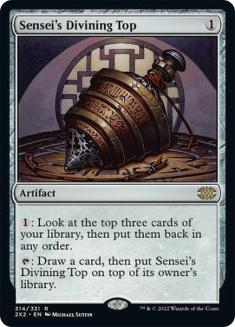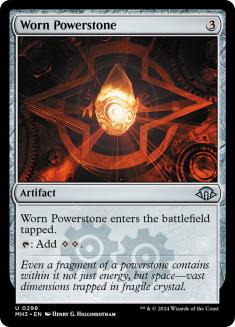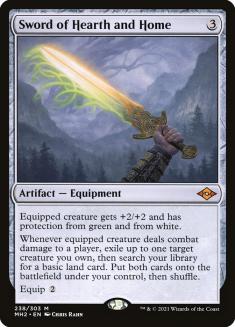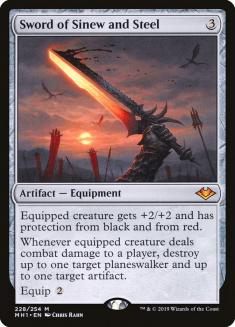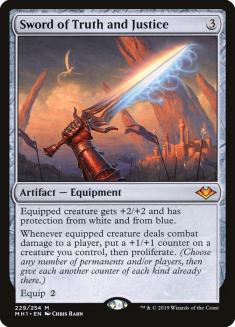Greetings Cube enthusiasts. I hope that you’re enjoying your early experience with Modern Horizons 2 and have been getting your fill of drafts in. My Cube articles to this point have overwhelmingly focused on digital cube offerings, but today I’m happy to report that I’ll be doing something pretty different. As I’ve teased on The 540, I want to start engaging more with reader-submitted Cubes and questions, and today marks my first foray into articles of this nature.
Today I’ll be going over the personal Cube of Doug Lambert and answering a handful of questions about various archetypes, balance concerns, and individual card choices. Doug’s Cube fits pretty cleanly into the category of a Legacy Cube, though the power level is scaled back on some of the most degenerate cards that you often see in these environments. I think that this is a great cube to discuss, as that framework describes among the most popular types of cubes that players maintain in paper. You can find Doug’s list on CubeTutor. This is the elevator pitch for the cube:
I have eight multicolored cards per guild, which is a little higher than most Cubes, but it feels like a sweet spot for me. In general I try to use those slots to really push a theme and avoid using them on removal/card draw (with some exceptions). I feel pretty good about making aggro viable, especially in white and red. I’m not sure if I’ve done enough with green or if it’s even worth trying. I’m not wild on adding more Monarch cards, as I feel control is a slight underdog with my setup.
This tells you quite a lot about Doug’s design goals. There’s a preference for a generally higher power level, but an aversion to cards that are completely warping on games, griefer cards, and the easiest-access combos. I personally love all of those notes and they’re consistent with the principles that I follow in delivering enjoyable and replayable Cube experiences. From there, Doug posed the following questions that I saw fit to lump together in terms of analysis:
Are there any cards in my cube that you find too miserable for other players that it’s just not worth it (e.g. Oko, Lurrus)?
In my mind these questions are all about more or less the same thing. “What are the weakest cards in the Cube, are any cards in the Cube inappropriately powerful, and what should I replace cards in these categories with?” In order to answer these questions it makes sense to me to go color by color, identifying the power level outliers and suggesting potential replacements. New set releases are the ideal time to make Cube adjustments, and Modern Horizons 2 is going to be among the most impactful releases for Cube, so this is the perfect time to take inventory of power level outliers and do some curation. So let’s get to it!
White
Problematic Cards:
Doug mentioned an aversion to the monarch, so it’s a bit surprising to see Palace Jailer in the spread. This card and the monarch mechanic are really hit-or-miss in terms of player enjoyment, and it’s one that I would include or exclude on the basis of whether my friends enjoyed it being part of the environment. Personally, my friends hate it and I don’t blame them. It’s one of those cards that’s almost exclusively appropriate for Vintage Cubes.
I might dislike Settle the Wreckage more than any other Magic player, but I’m making an effort to spread the bad word. My experience playing with and against the card is that the quality and nature of the opponent’s deck as well as their play skill completely define the card’s efficacy. It will often be the case that your opponent won’t have to or will choose not to make a bad attack into it, and you’re stripped of most of the agency of the card. It’s very close to a punisher card and in the games and matchups where the opponent is forced to play into it it’s not very fun or engaging. If it were up to me, no Cube that I play would feature the card.
I’ll also point out that Armageddon is an honorable mention here. The card generally teeters between unplayable and unbeatable, but it has just been a feature of many Cubes for many years and I can appreciate some nostalgic attachment to it and also acknowledge that it gives the white decks a potential “I win” button, which is something that the other colors generally have higher access to.
Cards Below the Power Level of the Cube:
The white beatdown decks generally don’t trigger prowess too often and the white decks that do often trigger prowess don’t have much interest in a two-mana 2/2. This card has never performed well for me, and I’d rather see something just generally better for the aggressive decks.
In general, the white column of this Cube is very well curated! That means that I would suggest approximately three cuts, and I’d replace them with these cards:
Doug mentioned that control looks to be a slight underdog, and both Solitude and Slash the Ranks are awesome tools for white control decks. Even absent a blink theme, Solitude will carry its own weight in a creature-heavy environment, and Slash the Ranks is an awesome tool to help control decks stabilize against a combination of creatures and planeswalkers. Neither card is oppressive and I find them to be appropriately powerful and engaging for Legacy Cube style play.
Containment Priest doesn’t shut off a ton in this Cube, but I like having it around in any Cube with Entomb and Reanimate. I also like having the flash threat for my white decks with Equipment in them in case of sweepers. If that’s not your speed, I’m also really big on Selfless Spirit in my white aggressive decks.
Blue
Problematic Cards:
Bribery was among the cards excluded from the Alt-Vintage Cube for being unfun, and I find that the card has a lot of similarities to Settle the Wreckage in that you don’t have much control over when it’s good and it’s pretty miserable when it is. Similarly, Tinker is another of those cards where somebody is unhappy when it goes on the stack. You either get something huge at a substantial discount and win easily or disaster strikes. Very little happens in the middle with these cards.
Upheaval is similar to Armageddon as a long-time Cube favorite, though in my group we’ve seen enough Upheavals for this lifetime. The tipping point for me was actually watching an Upheaval go off, resulting in a game lasting a half hour longer and the Upheaval player losing. Not only does Upheaval not offer much of an interactive play experience, but it’s also still a real drain when it’s “reasonable”.
I’m pretty firm in my position against these cards for a Cube of this nature, and would also submit the following for consideration as power level outliers:
All of these cards lead to a convincing number of games where they act as an “I win” button, and they generally have pretty high floors otherwise, unlike Armageddon. Of this crowd, I imagine that Sublime Epiphany is the least offensive in an environment of this high a power level, but I’d take a serious look at the other three and start asking how many games are made more fun by their contributions. I doubt you’d have difficultly convincing players to draft blue absent these cards.
Cards Below the Power Level of the Cube:
On the other side of things, we have Delver of Secrets which never quite feels playable and a few cards that ask a little too much for the value they provide. Fblthp and Cloudkin Seer do replace themselves, but there are just so many things you’d rather be doing for their mana costs. Thassa, Deep-Dwelling can range from awesome to total blank, and when compared to the other blue four-mana cards I don’t see it as an exciting option at all.
Even keeping to a watchlist, that’s still a lot of cards that I’d put on the chopping block! I’m looking at about eight swaps by my count, but luckily the well for blue is very deep. These are my top recommendations for blue cards not currently in the Cube:
A number of these have fallen from favor, but my personal experience playing with these cards have been that they have all held up great even by today’s standards. Looter il-Kor specifically is something of the blue poster boy for Cubes with Swords. Time Warp might be a worse fit than Alrund’s Epiphany given the other foretell cards, and I also think Saw It Coming would be a pretty welcome addition to this Cube.
You’ll notice a bit of a trend in my suggestions in that I find that cards that will almost always make somebody’s deck are more valuable to have around than archetype-specific cards. The experience of Cubing is more fun when your deck has a firm identity, but not when it isn’t competitive with the rest of the table. In general, I find that a lot of Cubes include too many rigid archetype-supporting cards and not enough generically solid ones.
While we’re talking about substitutions, this is a good time to address another of Doug’s questions:
Emry, Lurker of the Loch had me initially excited but fell almost completely flat when I started playing with it in Grixis Cube. In high-power environments without an incredibly heavy-handed focus on artifacts, it’s generally going to be worse than any card selection spell or interactive spell, in no small part because of how vulnerable its body is. In my mind, Emry fits best in a deeply thematic Artifact Cube and is replacement-level or below in Cubes that feature artifacts as a sub-theme.
Black
Problematic Cards:
I’m sure that the power level of Plague Engineer is reasonable, and you’re taking a bit of a gamble maindecking it, but there are scenarios where it’s good that it’s just game-ending and the sorts of cards that it’s advantaged against struggle enough against regular removal spells. It being not good sometimes is also not a selling point. Plague Engineer isn’t a total non-starter for me in Cube, but I don’t like what it’s up to here.
Entomb, Reanimate, and of course Griselbrand are definitely power level outliers, but for these higher-powered Cubes Reanimator is just something that a lot of players both expect and enjoy. I also imagine that Doug is interested in preserving this archetype given the posing of the following question:
For a deck as powerful and narrow as Reanimator, I find that you’ll run into more problems by including too much support as opposed to not enough. The Griselbrand decks don’t want more than one or two alternate options and they’ll be going for the Griselbrand if they can help it, and these decks tend to be more miserable to have around the more redundant you make them. It’s also deflating when you’re trying to draft a different black archetype and you keep seeing B-tier Reanimator cards in packs as opposed to the cards you want to play.
It has been far preferable in my experience to force Reanimator drafters to make their decks lean a little more midrange than to bombard everybody else with too many cards offering support to exactly one drafter. Creatures worth reanimating that are fine to cast aren’t difficult to make room for, but I’d sooner cut Necromancy from this Cube than add another of the weaker reanimation spells. When it comes to discard outlets, I follow the mantra that “good discard outlets are good” and I try to keep things closer to Jace, Vryn’s Prodigy than Putrid Imp.
Cards Below the Power Level of the Cube:
Both of these cards have played very poorly for me in Cube. You just pay too much for what you get. I consider the three cards I’ve listed as outliers for black to all be easy cuts, and I’d replace them with the following:
I like having Fatal Push in any Cube with Mother of Runes to reduce the games where the one-mana creatures can really run away with things, and Night’s Whisper just makes a lot of decks. Archon of Cruelty is a standout from Modern Horizons 2 that is both an excellent Reanimate target and realistically castable with all the fast mana in the Cube.
Red
Problematic Cards:
Red just hasn’t pushed the envelope too often historically, so it’s not surprising to see no red cards that are too good featured here. Red’s strength in Cube is mostly based on having a high volume things that are all fine.
Cards Below the Power Level of the Cube:
Heartfire Immolator is another card that I thought looked solid at first blush and that has been firmly replacement-level in practice. The rest of these cards are more broadly inefficient, and the Immolator is the one that you might consider keeping in the Cube. I adore Magmatic Channeler, but it just takes too long to really get going and is reliant on being paired with too many high picks to really perform in Cubes that don’t have a madness theme in my experience.
Before I get into replacements, Doug did pose a few questions specific to red as well:
I’m curious if red was the winningest deck before or after the printing of Elder Gargaroth. My experience has been that over time, more and more cards that completely brick-wall the red decks have shown up and I’ve struggled to consistently win with red decks in good-stuff Cubes. I’ve made a note that some cards are worth keeping despite their nature because they’re so ingrained in what the Cube experience is, and for my money I can’t really countenance Sulfuric Vortex being “too good” while Mystic Confluence and Entomb are okay.
Fireblast is only really good when it’s ending games, so I understand the aversion to that one a lot more. I find that opening Sulfuric Vortex is one of very few exciting reasons to draft red beatdown decks in Cubes like this, so I would petition for its reintroduction barring your playgroup being firmly against that card and those decks. If that’s the case though, you probably have to start looking at cards like Goblin Guide and asking if that’s where you want to be as well.
Ilharg, the Raze-Boar rules. I think you have enough or close to enough big things to justify playing Ilharg if you’re into it. Sneak Attack and Oath of Druids are some combination of not good and oppressive/not fun, so I wouldn’t spend much time thinking on them.
Some of this is just my personal bias, and I can’t really get fully away from that, but I find Izzet control decks to be excellent in good-stuff Cubes. You get counterspells for big threats and burn spells for cheap ones, and the combination of these things along with a few threats makes it easy to turn the corner and close games once you’re at parity.
I think red will suffer more from having too many cards supporting narrow identities than just leaning in as a solid aggressive and controlling color. The interactive red cards like Lightning Bolt and Glorybringer end up in a wide range of decks and color combinations, and I find cards of this nature most desirable. It’s very common to see Wildfire and other niche archetype driving cards included in similar Cubes and they tend to end up in sideboards or in decks posting 1-2 records. I find the sacrifice theme to be the most appropriate way to let red branch out a little in these Cubes and that’s already supported here, which is great.
That all said, there’s still the matter of upgrading five cards. I’d try this spread:
My experience with Ragavan to this point is still very limited, and there’s a real chance that it contributes to your red decks winning too much again. I’m assuming an aversion to red sweepers based on the current list which is why I didn’t recommend cards like Sweltering Suns or Arc Trail, though they might be more appropriate here than Ragavan given the concern over aggressive decks.
Green
Problematic Cards:
In general, I think fast mana is overutilized in Cubes and leads to more non-games than most other categories of cards. That said, this Cube is at a high enough power level where fast mana is really the only thing that green does well enough to hang. This relates well to another question that Doug had:
Green is hurt badly by mixing in beatdown creatures with the ramp cards. Llanowar Elves is better on average than every green one-drop that attacks and blocks and it’s generally unwise to put these cards in the same decks. I don’t think it’s problematic to have green largely focus on mana acceleration as a ton of archetypes can incidentally draft the ramp cards and there’s also an avenue for the green player to be rewarded for determining that green is open and drafting all of the best green cards instead of getting stuck with a bad aggressive deck. This line of thinking informs my list of green cards that are too weak for the Cube.
Cards Below the Power Level of the Cube:
The green aggressive archetypes just don’t do it for me. I wanna ramp! Here’s what I would replace these cards with:
You make not like it, but this is what peak green decks in Legacy Cube look like. Nissa, Who Shakes the World is another card that I assume is deliberately absent when it’s not present, but I find it to be a perfect fit for these environments. If you have a sour taste for the card from Constructed that’s fine, but at least upgrade Vivien, Monsters’ Advocate to Vivien Reid. Monsters’ Advocate has been consistently underwhelming in my experience, which is a much worse problem for a five-mana card to have.
Gold
Problematic Cards:
Fractured Identity was another of the cards excluded from the Alt-Vintage Cube, and Oko realistically should have been. Good riddance to bad rubbish.
Cards Below the Power Level of the Cube:
From my perspective, the four-drop slot looks too crowded for Seraph of the Scales to contribute much. Nightveil Specter is pretty hard to cast and just looks silly next to the far superior Thief of Sanity. Stormchaser Mage looks comparably sad next to Sprite Dragon, and Nicol Bolas, Dragon-God isn’t anywhere near as powerful as it is difficult to cast. I’d recommend these alternatives:
All these cards have played very well in my experience and maintain the exact color balance. You may want to disregard the Grixis slot altogether, but Dihada rules.
Another question Doug had was regarding guild identities, and on that front I expect that Gruul Spellbreaker isn’t going to fit the environment that results in making the changes that I’ve suggested to this point. So if everything so far has sounded good, I’d swap out that particular Gruul beatdown card for Escape to the Wilds. Showdown of the Skalds and Valki, God of Lies are two more cards that Doug explicitly asked about, and I do believe both would be great fits here over Fireblade Artist and Aurelia, Exemplar of Justice respectively.
Regarding the broader question of whether there are any cards not featured that should be considered, a lot of that was covered incidentally in my suggested swaps. Beyond that, I’d keep up on my Top 10 articles for every set, as these cards are selected with the idea of the cards that are most broadly Cubeable, which most commonly puts them right at home in Legacy Cubes.
Unsurprisingly, a lot of the cards from my Top 10 were among my suggested new additions. One card that absolutely should be added to this Cube that I haven’t yet mentioned is Damn. That one is a little funkier because you could slot it in as a white, black, or Orzhov card. That’s more a matter of personal philosophy, but the simple substitution for Day of Judgment is an easy one to make if you’re not sure what to cut.
Artifacts and Lands
I usually evaluate artifacts and lands in separate sections when reviewing Cubes for gameplay, but for design purposes it’s not uncommon that I’ll cut an artifact for a land or the other way around. I don’t see it as terribly important to hit specific numbers with these cards and both categories generally aim to feature cards that can be utilized in a wide range of decks.
Problematic Cards:
Cards Below the Power Level of the Cube:
I imagine that Grim Monolith leads to enough non-games, but it’s another card that I’ll give a pass for being a Cube hallmark. Mana Vault, however, is a bridge too far. Mana Vault has never been up to anything remotely honest. You’ll run into split camps on Signets, but there’s a lot of stuff that cares about artifacts in this Cube and I both think Signets are reasonable for Legacy Cubes and don’t want to suggest an absolute overhaul in that department.
Evolving Wilds and Terramorphic Expanse just aren’t very good. I’m sure they make decks, but next to Underground Sea they’re just a bit off. One option for this section would be to find two more cuts, maybe use that Grixis slot, and to add Triomes. I think they play well in high-power environments like this. I also don’t love the bookkeeping or nature of Paliana, the High City, so I’d submit that for consideration as a cut. Alternatively, I’d take these cards under consideration for inclusion:
Without getting into it (a topic for another day), I find Sensei’s Divining Top to be an underrated Cube card as opposed to Brainstorm as an overrated Cube card. It just goes into almost any non-aggressive deck and you realistically get to see tons of extra cards in any kind of long-ish game. The other cards are rocks that are just historically powerful staples that are much more appropriate here than Mana Vault.
An alternative angle would be to add some or all of the missing Swords, with Sword of Hearth and Home being one that I find particularly engaging. I imagine that some of the issue with Triomes is that it’s an incomplete cycle, which is true of these Swords as well, but it’s some food for thought if you’re already doing the Sword thing.
Whew! That was a lot to go over! I’d like to thank Doug for offering this Cube up for critique and for all the questions. I hope that these notes and suggestions are useful to you, and for everyone who took the time to read.
If you enjoyed this piece and have some Cube questions that you’d like to submit for my consideration, I’m hoping to do more articles of this or a similar nature in the future and would love to hear from you. I make no promises on if or when you’ll get the kind of thorough treatment that you read today, but tag me @RyanOverdrive on Twitter and I’ll see what I can do.

